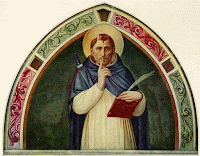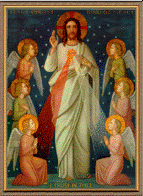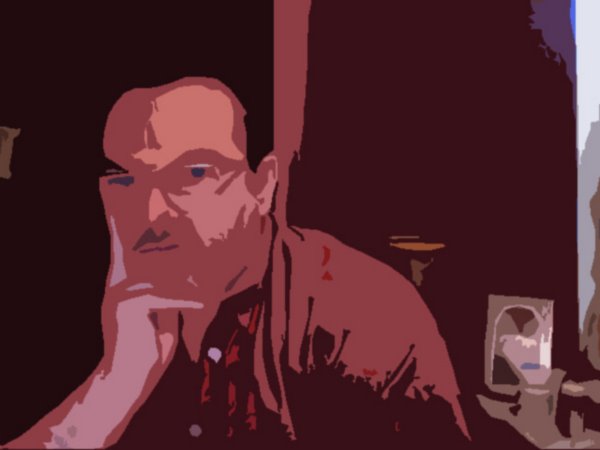 The man formed by the Liturgy is the man who is awake in the highest sense of the word. He is not only inwardly open to hearing the voice of God; he is not only aware of the ultimate Truth, but he also looks on all earthly goods in their true light. Far removed from all bluntness, indifference, stoic insensibility, and passiveness, his awakened ear is open to every created thing in its mysterious message from above and in its God-given meaning. His heart is open to the precious and noble character of created things such as water, for instance, as disclosed in the blessing of the baptismal water.
The man formed by the Liturgy is the man who is awake in the highest sense of the word. He is not only inwardly open to hearing the voice of God; he is not only aware of the ultimate Truth, but he also looks on all earthly goods in their true light. Far removed from all bluntness, indifference, stoic insensibility, and passiveness, his awakened ear is open to every created thing in its mysterious message from above and in its God-given meaning. His heart is open to the precious and noble character of created things such as water, for instance, as disclosed in the blessing of the baptismal water.What a contrast to the blunt, obvious conceptions of earthly goods received from God's paternal hand is found int he liturgical "Benedicite!" What constantly awakened gratitude! "The eyes of all wait upon Thee, O Lord, and Thou givest them their meat in due season (Oculi omnium in te sperant, Domine, et tu das escam illorum in tempore opportuno )." "Bless us, O Lord, and these Thy gifts which we are about to receive from Thy bounty (Benedic, Domine, nos et haec tua dona, quae de tua largitate sumus sumpturi )." "We give Thee thanks, O almighty God, for all Thy mercies (Agimus tibi gratias omnipotens Deus, pro universis beneficiis tuis )." At the same time, everything is organically placed into relation with the supernatural so that our spirit can rejoin again and again the unique and eternal, the goal of our hope: "May the King of eternal glory make us participate in the divine banquet (Mensae caelestis participes faciat nos Rex aeternae gloriae )."
 The man formed by the Liturgy watches, so to speak, with a "burning lamp in his hand," and "with girt loins," for the advent of the Lord. His life is a life of longing, hope, gratitude, solemn emotion, and openness to the mysteries of being. We see how deeply wakefulness is linked with reverence, with the consciousness that an adequate response is due to value, and with the sense of the right gradation of values. The awakened man is also conscious of the ultimate tie which binds him to all men before God; he sees Christ in his neighbor; he lives in the truth of the Mystical Body of Christ. To the extent that a man is awakened in this sense, he exists fully as a person; he genuinely lives; his life is true; he is a personality in the original sense of the word.
The man formed by the Liturgy watches, so to speak, with a "burning lamp in his hand," and "with girt loins," for the advent of the Lord. His life is a life of longing, hope, gratitude, solemn emotion, and openness to the mysteries of being. We see how deeply wakefulness is linked with reverence, with the consciousness that an adequate response is due to value, and with the sense of the right gradation of values. The awakened man is also conscious of the ultimate tie which binds him to all men before God; he sees Christ in his neighbor; he lives in the truth of the Mystical Body of Christ. To the extent that a man is awakened in this sense, he exists fully as a person; he genuinely lives; his life is true; he is a personality in the original sense of the word.Today it is particularly important to stress this point. In a legitimate reaction against an analytical, self-reflective consciousness, many have fallen into the cult of a naive unconsciousness, a childish unwakefulness. This is a falling into Charybdis in order to avoid Scylla. A wrong self-consciousness is, of course, disastrous, whether it takes the form of a squinting at the accomplishment of our life (in a curious looking backward at our actions and attitudes just in the living moment instead of focusing on the object) or whether it takes the form of an intellectual analysis and dissection of the world and ourselves in which we no longer see the woods for the trees. In either case, it is a hypertrophy of the analytical attitude which leaves no room for a contemplative possession of an obejct. But the unconscious man also is incomplete; he is an inauthentic half-man.
 True consciousness, an indispensable element of personality and an essential part of transformation in Christ, is nothing but wakefulness. It means emerging from all the mists of the vital and the unconscious into the brightness of the logos; it means being irradiated by the lumen Christi. It also means the ripening toward that full wakefulness which we shall actually possess only in eternity when we shall be flooded by the lumen gloriae, when we no longer see through a glass in an obscure manner but face to face, and when we no longer know in part but know as we have been known.
True consciousness, an indispensable element of personality and an essential part of transformation in Christ, is nothing but wakefulness. It means emerging from all the mists of the vital and the unconscious into the brightness of the logos; it means being irradiated by the lumen Christi. It also means the ripening toward that full wakefulness which we shall actually possess only in eternity when we shall be flooded by the lumen gloriae, when we no longer see through a glass in an obscure manner but face to face, and when we no longer know in part but know as we have been known.The great motto of this earthly life must be, "Watch ye therefore, because you know not the day nor the hour!"
Dietrich von Hildebrand
1943
Liturgy and Personality:
The Healing Power of Formal Prayer
Sophia Institute Press, 1993
pp. 101-103
1943
Liturgy and Personality:
The Healing Power of Formal Prayer
Sophia Institute Press, 1993
pp. 101-103















